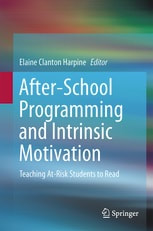Education Secretary, Betsy DeVos says, “This country is in a student achievement crisis, and over the past decade it has continued to worsen, especially for our most vulnerable students.”
Education Secretary DeVos blames the public schools and says that the only answer is to turn to charter schools. Unfortunately, Education Secretary DeVos fails to mention that “…after 25 years and some 6,000 schools, charters still on average produce results roughly equal those of the public schools to which they set out to be better alternatives.” Professor Paul Reville, former Secretary of Education in Massachusetts, also reminds readers that:
“It’s impossible to generalize charter schools. How charters are run, funded, and overseen varies dramatically from state to state, school to school. In Charter Schools at the Crossroads, one of the most comprehensive overviews of the charter movement, Chester Finn, M.A.T.’67, Ed.D.’70, concludes, “The charter track record can best be described as stunningly uneven.”
So, perhaps charter schools are not the answer.
As Peggy Carr, associate commissioner of the National Center for Education Statistics, explained
"Eighth grade is a transitional point in preparing students for success in high school, so it is critical that researchers further explore the declines we are seeing here, especially the larger, more widespread declines across states we are seeing in reading,….Both low- and high-achieving eighth graders slipped in reading, but the declines were generally worse for lower-performing students.”
Notice when politics is not the issue, as with DeVos, the National Center for Education does not advocate charter schools. Reading specialists and research tell us that reading scores are constantly, year after year, getting worse because of the teaching methods that we are using in the classroom (see my blog post from 9/14/19). Teaching methods can be just as bad in charter schools as in public schools unless we quit playing politics with students. We need change, but charter schools will not help unless charter schools use a different teaching method.
The most prevalent teaching method being used in public and charter schools at present is some combination of whole language, phonics, or balanced literacy. Each of these methods have been in full force during this decline in reading scores. As reported by the New York Times, in 17 states, fourth graders scored lower in reading in 2019. The state of New Jersey showed the largest decline in reading scores with six points. This is further proof that whole language and phonics simply do not work.
Can we correct these low reading scores? Yes, we can. We can teach each of these students to read. To do so, we must take whole language, phonics, and balance literacy completely and totally out of the classroom and replace these teaching methods with methods that actually work. No, charter schools are not an easy quick fix for reading failure; instead, we need to change the teaching methods used in the classroom. Until we do, students will continue to fail. We’ll talk more about the problems with whole language, phonics, and balanced literacy in my next blog.


 RSS Feed
RSS Feed
